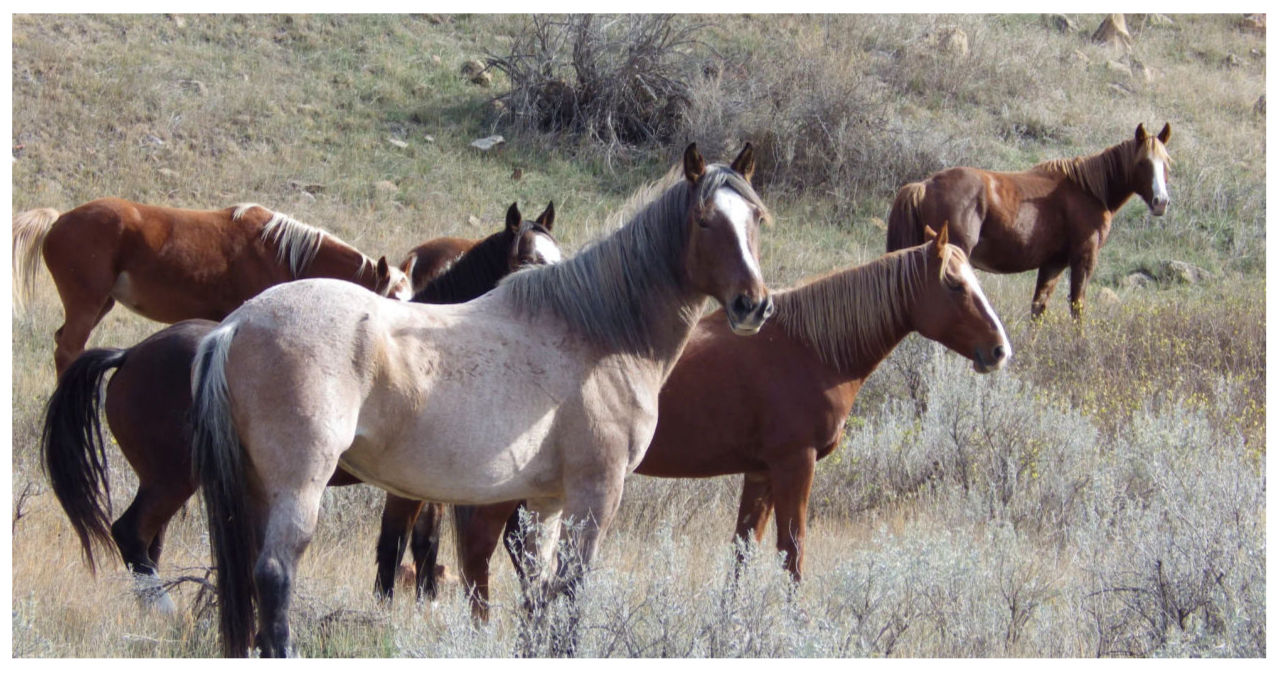Advocates are hopeful that a signal of support from Congress will prevent the removal of the beloved wild horses from the rugged landscape of North Dakota’s Theodore Roosevelt National Park. With around 200 horses currently roaming the park, these advocates are working tirelessly to ensure the horses’ continued presence and protection.
The National Park Service is expected to make a decision regarding the future of the horses in the Badlands, a vibrant and picturesque area. This decision is part of an ongoing process to develop a management plan for these animals, which some advocates argue should not be referred to as “livestock”.
Republican Senator John Hoeven has proposed legislation within the annual Interior and Environment budget bill, which urges the Park Service to maintain the horses in their current location. This legislation also suggests the possibility of future action that would prevent any funding from being used to remove the horses.
“We will maintain an ongoing dialogue with them and aim to reach a favorable resolution,” Hoeven expressed in an interview with The Associated Press.
Jesse Ventura and Aaron Rodgers are considered to be top contenders for the role of running mate for RFK Jr., according to recent news.
An important question remains: how many horses are needed to ensure the long-term survival of the herd? Advocates are pushing for a genetically diverse herd of at least 150 horses to prevent inbreeding problems. However, according to Park Superintendent Angie Richman, if the horses are allowed to stay, their population would still have to be reduced to 35 to 60 animals in accordance with a 1978 environmental assessment.
Richman and the National Park Service did not provide a comment in response to emails regarding Hoeven’s legislation.
Previously, park officials have stated that their assessment of whether the horses should remain aligns with their policies of eliminating non-native species if they pose a potential threat to the park’s resources. The park has put forward options to either remove the horses swiftly, gradually, or to take no action at all.
Advocates have long been concerned about the fate of the horses in the park. These horses have a unique history, as their ancestors were unintentionally enclosed in the park in the 1950s. Since then, they have been subjected to numerous roundups, raising fears that their removal from the park may have been premeditated.
According to Castle McLaughlin, a graduate student who conducted research on the horses while working for the Park Service in North Dakota in the 1980s, the origins of the horses in the park can be traced back to Native American tribes, local ranches, and domestic stallions that were introduced to the park between the late 1970s and the 1990s.
“They are truly a representation of living history as they embody the types of horses that the people of North Dakota, both Native and non-Native, have had for the past 150 years,” expressed McLaughlin. She expressed her support for the state leaders’ dedication to preserving the horses. However, she remains cautiously optimistic and skeptical about whether the Park Service will make the right decision in this matter.”
Visitors and photographers are often thrilled by the sight of horses as they roam along the park’s scenic road and hiking trails.
Wisconsin Republicans have taken another step in their ongoing battle with Governor Evers by firing eight more of his appointees. This recent move includes the removal of regents and judicial watchdogs from their positions. It appears that the Republican party is determined to assert their authority and challenge the decisions made by the Governor. This latest development adds to the growing tensions between the two sides, highlighting the deep divide in Wisconsin politics.
The decision process has received overwhelming support for keeping the horses, based on a significant majority of public comments.
Chris Kman, the President of Chasing Horses Wild Horse Advocates, expressed her optimism regarding the legislation and its potential to ensure the horses’ continued presence. However, she remains curious about the park’s decision and the implications of the legislation on the horses’ management plan.
“I doubt that any of us will have trust, even with an act of Congress, in the park’s willingness to preserve a genetically sustainable herd of horses,” she expressed. “…Their mindset throughout has essentially been, ‘We cannot maintain the horses. We acknowledge the public’s desire for them, but we will not accommodate them,’ regardless of the overwhelming support.”
In a recent development, Governor Doug Burgum extended an offer of state collaboration to ensure the upkeep of the horses in the park. In response, Richman expressed the park officials’ willingness to cooperate with the governor and the state in order to achieve a mutually beneficial outcome.
There are currently all of the horses located in the South Unit of the park near Medora. The decision made by park officials will also impact approximately nine longhorn cattle in the North Unit of the park.



